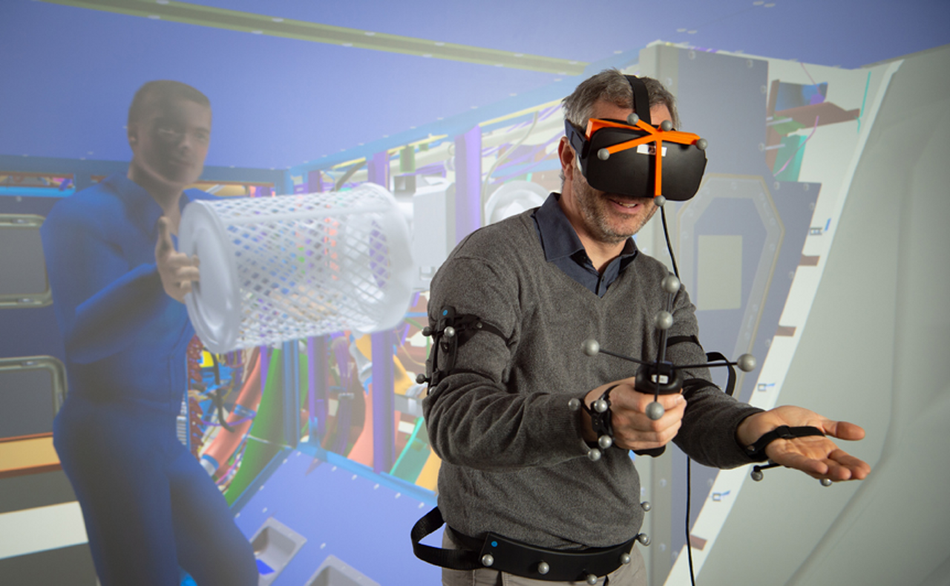Digital Twins bridge the gap between product development and product operations
Digital Twins are a key sustainability enabler across industries.
Together with Ansys, a developer of simulation software, we are creating a series of content about the technologies that make sustainable transportation possible. Electric vehicles, hybrids, and hydrogen cars are greener alternatives to traditional vehicles powered by fossil fuels, but they still have an environmental impact. In this article, we take a closer look at their emissions examining their carbon footprint at the point of manufacturing as well as through their lifetime. This article was based on case studies from Ansys with significant editing and additions by Wevolver, and IoT expert John Soldatos.
Introduction
For nearly a decade, industrial enterprises have been heavily investing in their digital transformation as part of the fourth industrial revolution (Industry 4.0). The latter leverages cutting-edge technologies like Internet-of-Things (IoT), Cyber Physical Systems (CPS), cloud computing, Big Data, and Artificial Intelligence (AI) to digitize physical production processes and to improve the quality, speed, resilience, and cost-efficiency of business processes. Specifically, Industry 4.0 enables a host of data-driven, added-value use cases in areas like intelligent asset management, quality management, supply chain management, and generative product design. Such use cases have been already deployed and demonstrated in various industrial sectors such as manufacturing, energy, oil & gas, mining, smart buildings, and facilities management.
In recent years it is also evident that digital technologies are key enablers for reducing CO2 emissions and achieving sustainability targets. For instance, the implementation of predictive maintenance and predictive quality approaches helps to avoid machine failures, which reduces scrap and waste. As another example, the digitization of the manufacturing value chain facilitates products and materials flow traceability. The latter boost the implementation of eco-friendly production practices and of circular economy use cases (e.g., recycling). Overall, digital technologies ease and accelerate the implementation of sustainable production practices. This is the reason why many enterprises focus on the so-called twin transition i.e., the combined digital transformation and green transformation towards a zero-carbon and zero-waste economy. The twin transition is perfectly aligned to the strategic agendas of governments and of industrial enterprises, such as the recently announced European Green Deal of the European Commission.
Digital Twins as Sustainability Enablers
A digital twin provides an accurate virtual representation of one or more connected physical assets or processes in the cyberspace. It is a real-time virtual copy of connected industrial equipment, which reflects the actual context of assets and operating processes that comprise the environment. For instance, a digital twin of a piece of industrial machinery within a plant provides a digital representation of the context and the condition of the asset, including information on its performance and maintenance needs. A digital twin remains synchronized to the status of the physical world: As the operational status of the machine changes, the parameters of the digital twin are altered accordingly. Digital twins can be used to simulate complex processes in the digital world i.e., without affecting the status of physical items and processes. Moreover, they enable what/if analysis of alternative physical scenarios in safe and cost-efficient ways. This is because the different scenarios and their outcomes are evaluated in the cyber world i.e., their adverse effects on the industrial environment are avoided. The analysis and assessment of alternative scenarios is a key to optimizing production processes, through identifying optimal configurations in areas like assets maintenance, process control, logistics, and supply chain management.
Digital twins are one of the most prominent building blocks of Industry 4.0 applications. Cyber Physical Production Systems (CPPS) systems, system-simulation and digital technologies like Big Data, Cloud computing, and AI enable the development of rich, accurate, and versatile digital twins. Specifically, CPPS systems and IoT devices facilitate the acquisition of real-time information about assets and physical production processes. Likewise, system-simulation and data analytics(ML/AI) eases the task of creating rich cyber-representation of complex physical processes and they can be used to simulate and assess alternative scenarios as part of what/if analysis.
Digital twins are a very powerful tool when it comes to determining production configurations that optimize waste and improve sustainability. For example, a digital twin can be used to determine the process control parameters that avoid products’ defects and minimize waste generation. Similarly, a digital twin can be used to test and validate alternative maintenance schedules for one or more assets, which helps determining the schedule that prevents unplanned downtimes, avoids machine failures, and reduces relevant CO2 emissions. Overall, a digital twin is a key enabler for sustainable industrial operations as part of the emerging twin transition of modern enterprises.
Green Digital Twin Use Cases
Digital twins enable a host of sustainability optimizations in many different use cases (e.g., maintenance, recycling, energy optimization) across different sectors. Some of the most prominent use cases include:
1. Product development and testing
Developing products is a long and intricate process. For instance, it takes up to 6 years to design and launch a new car model. It needs to be a seamless transition from the preceding model to the new model. A slight mistake during the process can undermine the brand's value and profitability.
A digital twin helps to integrate data between previous-generation models with the new concept in their digital formats. Twinning also enables seamless communication between product designers, end customers, and other stakeholders. When it comes to product testing, having a digital twin negates the need to wait for performance data gathered during vehicle trials to determine its performance and quality.
2. Digital Twins for Enterprise Maintenance
Once upon a time, industrial enterprises used to maintain their assets (e.g., machines, equipment) in a reactive manner, i.e., they used to replace or repair the asset when it failed. This resulted in unplanned downtimes of production processes, which led to considerable loss of time and money. Over the years, most enterprises transitioned to a preventive maintenance approach, i.e., replacing or repairing assets before their break, within a time window suggested by the OEM (Original Equipment Manufacturer). Preventive approaches help to avoid catastrophic downtimes, yet they do not lead to optimal utilization of the asset, as they service or replace assets in advance of their end of life. In recent years, the advent of Industry 4.0 enables a shift from preventive maintenance to Condition Based Maintenance (CBM). CBM considers the status of the assets, when planning and performing maintenance activities, which leads to optimal Operating Equipment Efficiency (OEE). For instance, in the scope of CBM, enterprises estimate the Remaining Useful Life (RUL) of an asset in order to schedule its maintenance at the best point-in-time. The latter leads to predictive maintenance approaches, which predict when the asset will break in order to optimize the scheduling of maintenance, repair, and service operations.
Digital twins are key enablers of CBM and predictive maintenance processes. They construct a virtual cyber-representation of the asset in the digital world, through collecting and analyzing detailed information about the condition of the asset. In this direction, a digital twin for predictive maintenance leverages IoT data that are collected from devices like vibration sensors, acoustic sensors, ultrasonic sensors, temperature sensors, power consumption sensors, and thermal cameras. Likewise, the digital twin makes use of physics (e.g. system-simulation) and data analytics techniques (e.g., machine learning) to extract knowledge and insights about the condition of the assets and to estimate its RUL. Using the digital twin, maintenance engineers can analyze different maintenance scenarios in terms of their timeliness, cost, and impact on production operations. Furthermore, digital twins can be used to quantify the benefits of alternative maintenance scenarios that involve multiple assets and production lines. Specifically, they can help in evaluating the scale up of predictive maintenance scenarios across many different assets, through calculating their ROI (Return on Investment) and the CO2 they produce.

It is also possible to combine digital twins with ergonomic Simulated Reality (SR) visualizations of the assets to provide remote support to field technicians that repair or service the assets. For instance, an experienced engineer of the OEM can provide the field worker with remote real-time instructions about maintaining the asset. In this case, the remote instructions are superimposed over an Augmented Reality (AR) cyber-representation of the digital twin and displayed to the worker’s AR device (e.g., smart glasses). This is a very popular use case of the COVID19 era, where traveling is much more difficult and less frequent than it used to be. It is also a use case that contributes to a decarbonized economy due to more sustainable production operations and the reduction of travel-related CO2 emissions.

Predictive maintenance applications are among the most popular use cases for digital twins. This is because all industrial sectors (e.g., manufacturing, energy, oil & gas, mining, buildings) are concerned with improving the timeliness, effectiveness, cost, and sustainability of their maintenance processes.
3. HVAC Optimization in Smart building management
Facility managers’ top priority is to ensure the sustainability and cost-efficiency of the properties that they manage, as well as to maximize the comfort and satisfaction of their tenants. In this direction, facility managers strive to optimize the operation of HVAC (Heating Ventilation and Air Conditioning) installations of their properties. HVAC systems are a primary source of power consumption in modern buildings. This is the reason why their optimal operation is contributing to the buildings’ and facilities’ sustainability. At the same time, HVAC systems play a key role in ensuring a pleasant and comfortable environment for tenants.
The optimization of HVAC operations hinges on the availability of accurate information about the temperature conditions and the occupancy of the various spaces. To this end, it is possible to develop a digital twin of the facility that will collect, analyze and track the conditions of the various spaces to configure HVAC operations accordingly. The digital twin shall adapt the operation of HVAC in line with the temperature of the various rooms and spaces, provided that they are occupied. On the other hand, it should stop HVAC systems in rooms that are not occupied.
HVAC tuning is already taking place in several buildings, based on heuristic information about the building’s occupancy. Nevertheless, the COVID19 pandemic has disrupted conventional occupancy patterns due to the scale-up of teleworking and work-from-home policies. For instance, many offices are no longer occupied during conventional working days and hours (e.g., weekdays, 9 to 5), which asks for more context awareness about the spaces of the facility. Therefore, a digital twin for HVAC operations monitoring and adaptation is an excellent COVID19 use case. Furthermore, the use of digital twins is expected to expand following the end of the pandemic i.e., in the new normal.
Summary
Overall, digital twins are very powerful when it comes to evaluating alternative industrial scenarios in terms of their cost-effectiveness and sustainability. Furthermore, they are excellent tools for determining how to best decarbonize an asset, an object, or an entire system within an industrial environment. As such digital twins will provide substantial help in realizing the envisaged twin transition of industrial enterprises.
Understanding and overcoming digital twin challenges with Ansys Twin Builder
The benefits of digital twins are obvious but widespread implementation is hampered by the lack of resources to create a simulated product model, verify the model, deploy the model by connecting it to actual working products, then analyze the collected information. Because this process typically involves multiple functions and multiple technology platforms, the majority of companies are intimidated by the practical challenges of implementing the concept of digital twins within their own operations. Ansys, a founding member of the Digital Twin Consortium, has developed its Twin Builder software to assist enterprises of all sizes to create and leverage digital twins. In addition to the packages, easy workflows and high levels of automation Ansys has produced comprehensive educational resources to educate and inspire on digital twin topics. Visit their Digital Twin microsite for more detail.

About the sponsor: Ansys
Ansys provides engineering simulation software used to predict how product designs will behave in real-world environments. Founded in 1970, Ansys employs more than 4,400 professionals, many of whom are expert M.S. and Ph.D.-level engineers in finite element analysis, computational fluid dynamics, electronics, semiconductors, embedded software, and design optimization.



